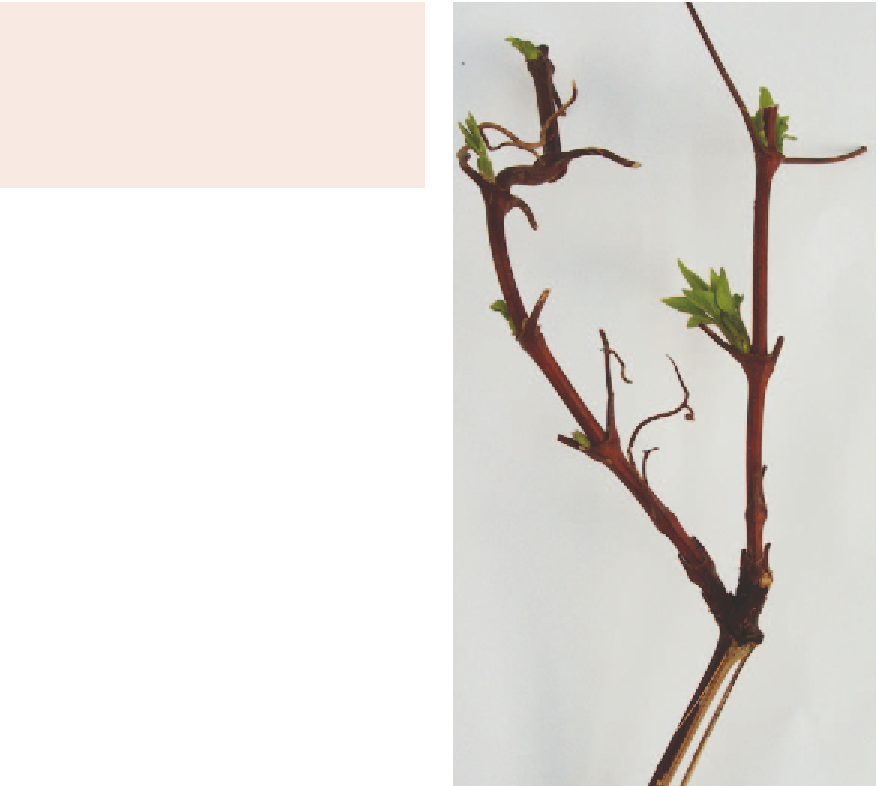Agriculture Reference
In-Depth Information
Note:
The male vine, essential for
pollination, needs the same regime of
pruning. However, the winter pruning
should be performed in spring straight
after flowering when the male and female
can be differentiated.
Clematis
As with any genus that has been highly
cultivated, pruning times and frequency vary
considerably. Clematis species are listed in the
various tables as to the best pruning method
and timing; however, there are a few general
rules that should be followed.
Pruning at planting
Prune young plants hard to 20 cm to
encourage plenty of growth from the base
until the plant has a good framework.
A 'good' framework is when there are
enough established older stems to serve
your purpose (see below).
Landscape purpose
When covering a wall or fence, train up to
10 stems and spread them evenly over the
surface. The more stems there are, the more
flowers. Newer growth can be pruned back to
fat buds 15 cm from these stems at the
appropriate time (see Figure 4.97).
Figure 4.97
Last season's growth can be pruned back to
fat buds 15 cm from the older framework stems at the
appropriate time.
climber a 'leg up' so it will flower on the
outside of the canopy rather than waste its
blooms on the inside of the host plant. When
it is time to prune (see Tables 4.22 to 4.24),
reach into the host plant and prune hard
back to 15 to 20 cm just above the initial
pruning point on the slender 'trunks' (see
Figure 4.98).
Clematis that are grown through trees can be
trained to carry the vine into the canopy of its
host plant. After the initial pruning at
planting, select three to four stems and prune
them to just below the canopy of the plant
that you want it to grow through, up to 2 m
from the ground for a tree. This gives the

